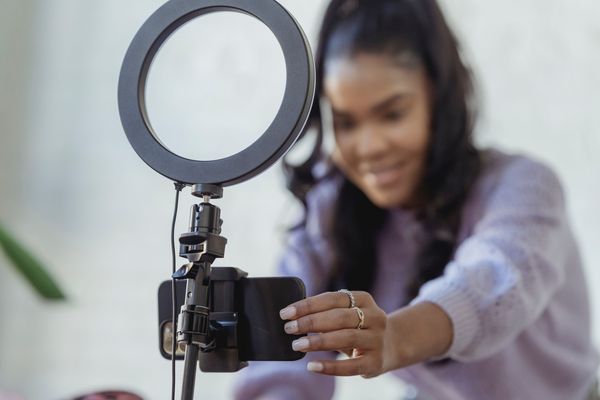How to Conduct a Video Interview: 6 Options That Make the Technical Side Easy
Video interviews are incredibly convenient for all involved, so long as they’re handled well and everything runs smoothly.
Technical gremlins can derail even the best-planned interview, so here are some ideas for lessening the chances of issues in this area, and making it as streamlined as possible.
Taking Advantage of Cloud-Based Video Interview Platforms
For a largely hands-off approach from a technical perspective, cloud-based video interview platforms are a sensible choice. Indeed they can be effective throughout the onboarding process.
You'll be able to schedule interviews quickly and easily, record them with ease, and review recordings at any time without having to set up anything special or download extra software.
Plus, many cloud-based platforms offer features like automated scheduling reminders, so everyone is on the same page before an interview begins, thus making it a stress-free experience all around.
Leveraging Smartphone Apps to Make Scheduling Easier
Conducting video interviews doesn't have to be a complicated process. By implementing scheduling-focused smartphone apps, you can make sure that the timings are taken care of down to the last second.
With intuitive features like calendar syncing and automated reminders sent directly through the app, you won’t have to worry about double bookings or missed appointments. Moreover, these apps allow for easy customization of interview settings, so you’re all on the same page before an interview begins.
Using a Video Chat Option Inside Your Company's App
With the help of an easy-to-use video chat API of Sendbird, you can incorporate calling capabilities into your company’s existing app. As Sendbird uses only the premium package, for starting level consider the Sendbird alternative, which has more packages, flexible pricing, and more affordable features.
This way, no extra setup or downloads are needed, as the interviewer and candidate will be able to start their conversation with just a few clicks.
Better yet, you can customize it as much or as little as is necessary, depending on the type of interview being conducted.
This not only includes controlling the technical side of the process, but also adding your own branding, and making the experience feel more professional and holistic as a result. Many organizations also record talking head videos within this setup, repurposing them as branded assets for onboarding, internal communications, or even future candidate outreach.
Implementing Web Conferencing Solutions for Seamless Connections and Collaboration
The issue of compatibility can rear its head when dealing with standalone software for running a video interview. If a candidate doesn’t have the right type of device, or an OS that’s supported by the software you intend to use, it can throw a spanner in the works.
Of course, if you’re looking for a reliable way to conduct video interviews without the chance of technical hiccups related to this concern, then web conferencing solutions may be the best option.
Being browser-based instead of locally installed, it lets everyone connect virtually anywhere across multiple devices, all while providing secure connections with advanced encryption protocols.
You won’t be missing out on advanced features like screen sharing either, so teams can collaborate in real-time on projects or presentations during their interview sessions, making it ideal for those who need seamless interactions on a large scale.
Keeping Software Up to Date
When it comes to conducting video interviews, one of the most important things you can do is keep your software up-to-date. This ensures that any technical difficulties are quickly resolved or avoided in the first place and that all features offered by the platform or app in question remain fully functional.
Many providers offer automatic updates, so there's no need to manually check for new versions every time. Just ensure that this feature is enabled, and you’re good to go.
It’s also worth noting that this is a good move from a security perspective since up-to-date calling and conferencing solutions will be better defended against outside interference than unpatched equivalents.
Providing Detailed Joining Instructions
One of the best ways to make video interviews easier for everyone involved is to provide detailed joining instructions before each session begins.
This way, all parties will be able to connect quickly and easily without any confusion or technical issues getting in the way.
The instructions should include a link or code for them to use when accessing the relevant app or platform, as well as any other details, such as device requirements, software downloads, and so forth.
Also remember that you can reach out to past interview candidates to get feedback on what the experience was like, as well as give some of your own, and pick up on any issues that you might have missed.
It’s possible that technical snafus might only impact them on their end, so you need to be proactive about rooting these out, rather than assuming everything went swimmingly.
The Bottom Line
You need to be prepared for the likelihood that technical woes will afflict any video interview that you run, and not only be prepared to avoid them with the right combination of software and hardware, but also have contingency plans in place, so you know how to deal with any complications that do arise on the day.



